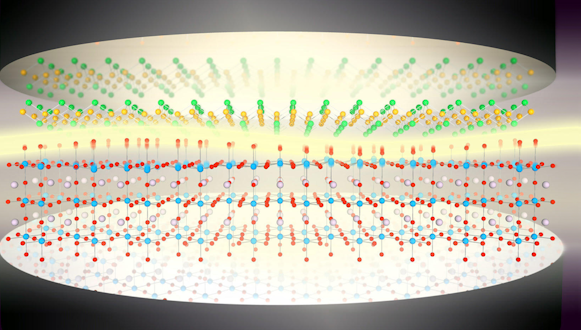Max Planck-New York Center for Nonequilibrium Quantum Phenomena
The Max Planck Institute for the Structure and Dynamics of Matter in Hamburg (MPSD) and the Max Planck Institute for Polymer Research in Mainz (MPIP) together with the Columbia University and the Center for Computational Quantum Physics at the Flatiron Institute have launched a new joint research center. This new enterprise aims to understand, control and manipulate the uniquely useful properties of quantum materials in unstable states. By means of electricity, heat pulses, photon bombardment or placement in quantum cavities, materials reach non-equilibrium states, where they can assume new properties and become magnetic, ferroelectric or superconducting, for example. By understanding and controlling these processes, researchers can develop novel materials with diverse purposes and uses beyond our imagination. The new research center, the New York City Center for Non-Equilibrium Quantum Phenomena, was inaugurated by all four partner organizations on November 18, 2019 at the Columbia University.
The Max Planck – New York City Center on Non-equilibrium Quantum Phenomena aims to unite and exploit the complementary strengths of research groups located at two Max Planck Institutes: MPSD, Hamburg and MPIP, Mainz, and two New York City institutions: Columbia University and the Flatiron Center for Computational Quantum Physics (CCQ).
The partners will join forces to advance one of the most vibrant and exciting areas of research in the physical sciences: control of non-equilibrium quantum phenomena in complex materials. We will especially focus on applications of non-linear light-matter coupling that result in phases with no equilibrium counterparts.
Scientific breakthroughs will be enabled by the Center’s unique combination of electromagnetic and scanning probe spectroscopies that measure the dynamics of matter at the shortest time and length scales, world-leading expertise in creating materials with uniquely tunable properties, and new theoretical and computational methods developed at a new and unique institution.
Research collaboration among teams will transcend institutional and geographic boundaries. Joint research positions and long-term visitors and exchange programs will further strengthen the close collaboration among the involved institutions.
Our goals are to become a world leader in these areas of science and to establish a new blueprint for international collaboration.
